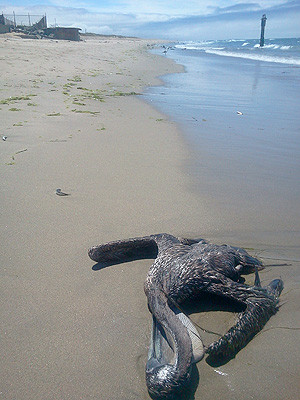Mystery of world's worst toxic algal blooms solved: Cold water upswells from the deeper ocean
Algal blooms can lead to fatal food poisoning and kills seals, fish and birds.

The most deadly algal blooms have extremely high levels of the neurotoxin domoic acid, which causes paralytic food poisoning and in rare cases amnesia or death if people eat contaminated shellfish. Scientists now think they have discovered why such blooms happen.
One of the worst algal blooms on record happened in 2015 in Monterey Bay, California. The algae that were flourishing were mainly a variety called Pseudo-nitzschia australis, which tend to produce more domoic acid. The algae were also packed unusually densely in a large bloom stretching for miles.
Fish such as anchovies and filter-feeders that ingest the algae concentrate the domoic acid. Then when other predators eat the fish, it becomes even more concentrated in them.

It was previously thought that a pocket of warm water, known as a 'warm blob', was to blame. A study in Geophysical Research Letters has now identified that in fact upwelling of cold water from the deep oceans was responsible.
When strong north-westerly winds blow in the area, surface water is blown out of the bay. It is replaced by cold water welling up from below. This cold water is rich in nutrients, including nitrates and silicates.
The algae rely on nitrates to create domoic acid, and they use silicates to grow. This sudden surge of nutrients led to an algae population explosion.
Crucially, the huge algal bloom ran out of silicates before nitrates. Under these conditions, the algae tend to create excessive amounts of domoic acid as their growth and division become restricted.
The end result was a large algal bloom with particularly high concentrations of domoic acid. Large numbers of pelicans and sea lions died or had miscarriages because of the bloom.
"In this case, the nutrient silicate appeared to be the key factor," said study author John Ryan of the Monterey Bay Aquarium Research Institute in a statement. "However, other nutrients, such as urea in wastewater, can also influence the toxicity of these algae."
The researchers think that the unusual chemistry of Monterey Bay could be linked to climate change as the North-east Pacific ocean warms. Knowing the conditions that lead to the particularly deadly algal blooms could help fisheries spot them coming and make sure their shellfish don't get contaminated, reducing wildlife deaths and cases of food poisoning in humans.
© Copyright IBTimes 2025. All rights reserved.






















